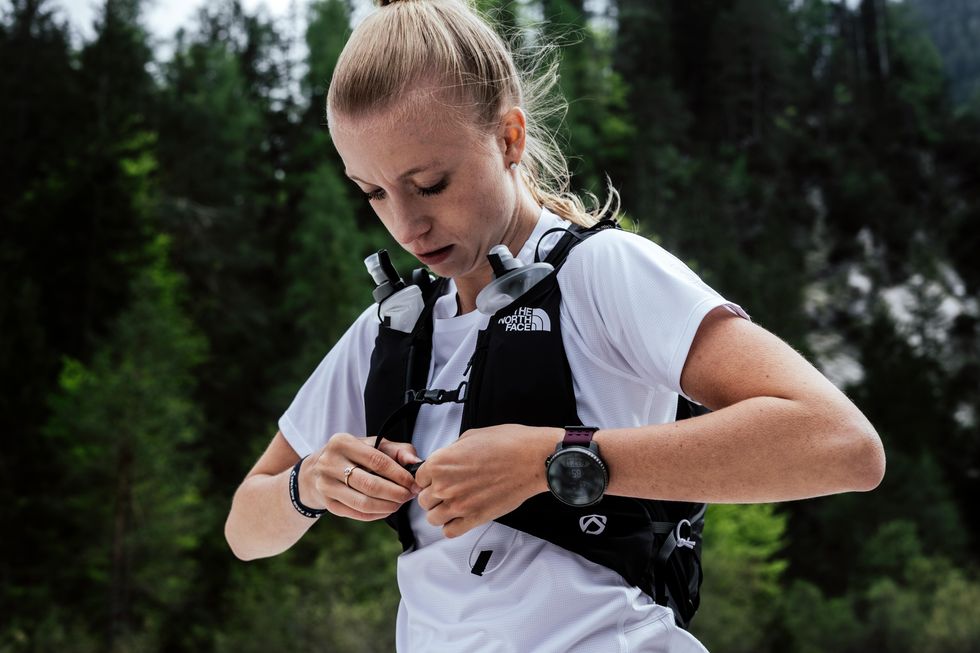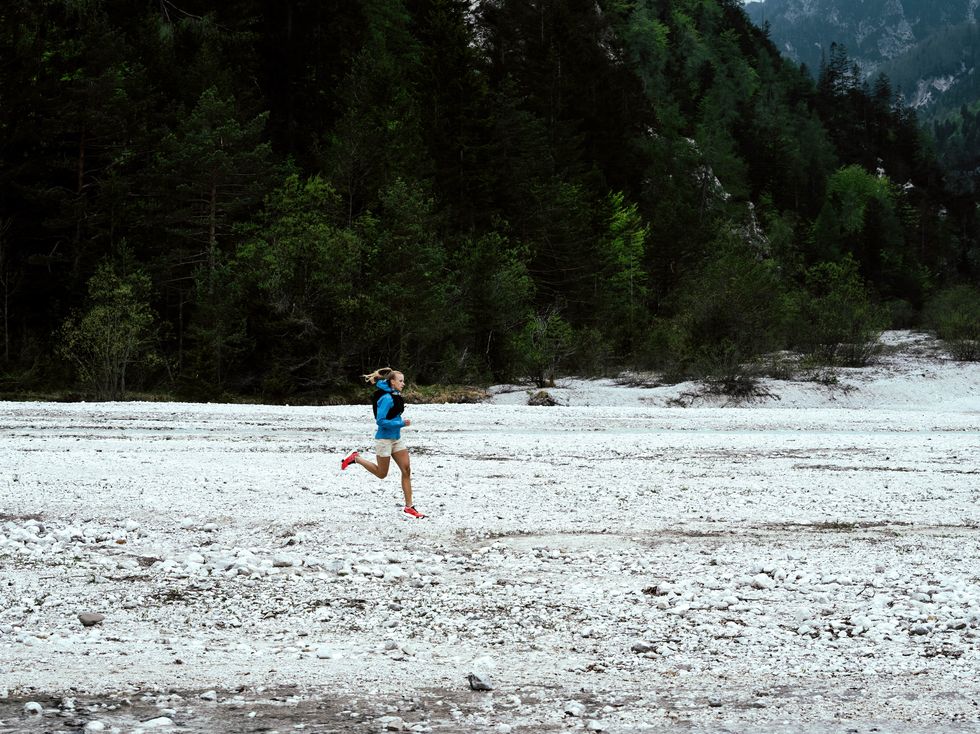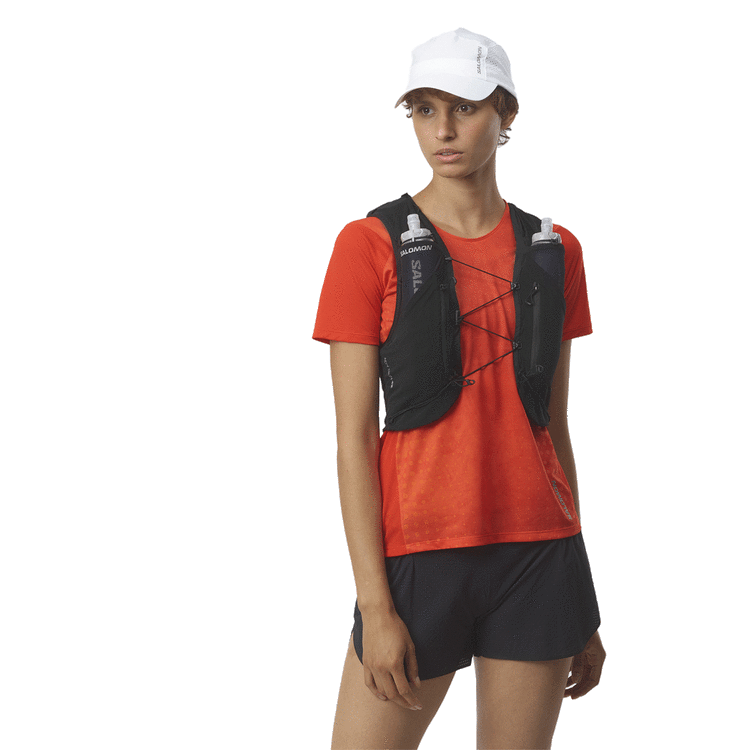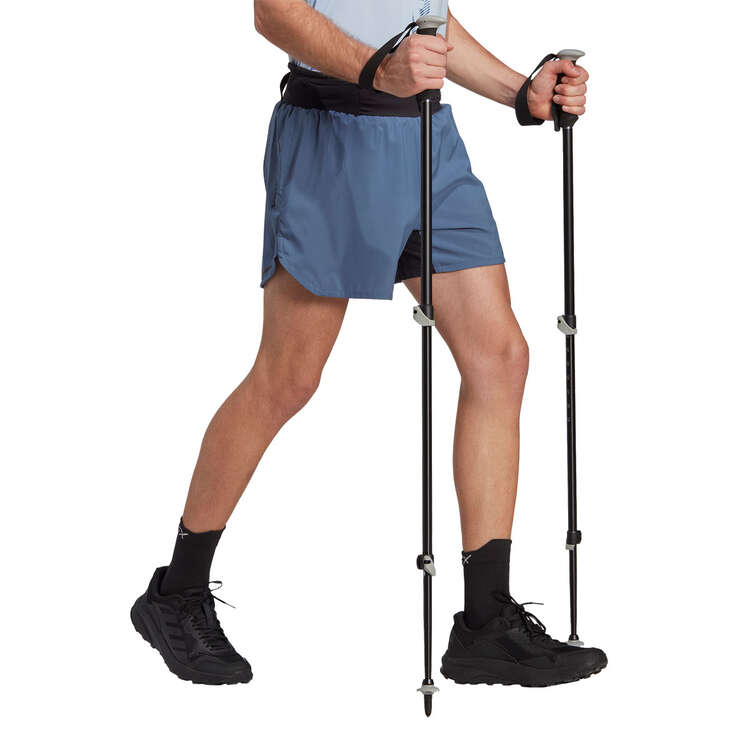Are you ready to venture beyond 42.2 kilometeres and experience the ultimate test of endurance?
BY ALICE BARRACLOUGH UPDATED: 29 FEBRUARY 2024

So perhaps you’ve completed the marathon distance (and have the medal to prove it) and are now wondering what comes next. Why stop at just 42.2 kilometres? If you find yourself craving an even greater challenge, then an ultramarathon could be a good fit for you.
However, when you’re dealing with such immense running distances, it can feel quite intimidating and you’d be forgiven for not knowing where to start. To help you start your ultramarathon journey on the right foot, we’ve spoken to accomplished ultramarathoners Elsey Davis and Ida-Sophie Hegemann for expert tips on how to train for an ultramarathon, from getting the right kit to harnessing a strong mindset.
What is an ultramarathon?
In the simplest terms, an ultramarathon is any race that is longer than the marathon distance of 42.2km. Ultramarathons can vary quite drastically in distance, though, and encompass anything from a single-day 50K race to a multi-stage event spanning hundreds of kilometres. Unlike road marathons, which are usually confined to smooth, paved surfaces, ultramarathons often involve more challenging terrain – from soggy fells to sand dunes – and are designed to test both your physical endurance and mental toughness.
How to train for an ultramarathon
As you may have expected, training for an ultramarathon can be both time-consuming and mentally demanding. So, once you’ve decided which event you want to enter, you’ll be wise to get a well-structured plan that helps you to gradually and safely build your endurance for your chosen ultramarathon distance. Here are some tips on how to get started:
Gradually increase your mileage
Start by focusing on building a solid endurance base, gradually increasing your weekly mileage by about 10% each week.
Train on similar terrain
Where possible, try to train on similar terrain to what you’ll experience in your ultramarathon, or seek good alternatives. For example, if your ultramarathon involves mountains but you (understandably) don’t have a mountain on your doorstep, try to seek out hills instead – this will help to prepare you for the specific challenges and conditions of the race. ‘I try to mix up long hills and short hills and replicate the hills that will be in the race by running up hills with a similar gradient,’ says Davis.
If you’re preparing for an undulating race, you could also take some of your runs to the treadmill and ramp up the gradient to get your body accustomed to working uphill. Jack Scott, winner of the 2024 Montane Spine Race – a non-stop, 431 kilometre trek along the Pennine Way in the depths of winter – completed much of his training on a treadmill set at an incline, so if it’s good enough for him, then it’s good enough for you, too.
Switch up your training
Your ultramarathon training plan should include a combination of running, cross training, strength training and rest days. ‘I love doing two runs a day, but I’ve learned from my past experience and health that it’s more important to do something else other than just running,’ says Hegemann. ‘So I go on the bike or do aqua jogging.’
Elsey agrees. ‘I cross train on the bike. My double days usually consist of running in the morning, then biking in the afternoon. I also do two big gym sessions a week – which have been built for me by a strength coach – and include leg conditioning for trails specifically.’
Practise your nutrition and hydration plan
Experiment with different forms of nutrition and hydration during your ultramarathon training to learn what works best for you – and how much you can stomach. This includes testing different electrolytes, foods and gels before, during and after your runs. ‘It’s about trying everything and seeing what works,’ notes Hegemann. ‘I’ll prepare food bags for every aid station, but normally I eat less than I want to or plan to. Until last year, I wasn’t even able to eat gels, so I just drank all the carbohydrates in my water. But I’m starting to get better – it’s definitely a process.’
Accept the fear
Due to the off-road nature of ultramarathon races, you are likely to encounter downhill sections on technical trails, which can feel a little scary. ‘Try to take risks and accept that you might fall, but when you do, it’s not so bad,’ says Hegemann.
‘The more relaxed you are, the easier you’ll flow down,’ adds Davis. ‘Naturally, you’ll kind of tense up if you’re not used to running down technical trails – and that’s the worst, because you put the brakes on and your muscles tense up. So try to be relaxed.’
How long does it take to train for an ultramarathon?
How long you need to train for an ultramarathon very much depends on your current fitness level and the race distance you’re aiming for. If you’re training for a 50K ultramarathon rather than a 100K or multi-stage race, for example, you won’t need as much time to build up your endurance.
That said, training plans for an ultramarathon tend to range from roughly 16 to 24 weeks. It’s recommended that complete beginners, or those with only limited marathon-distance experience, factor in at least 18 to 24 weeks of training to slowly build up mileage while reducing the risk of injury.
Those who consider themselves experienced marathon runners – and who already have several marathons under their belt – can opt for a slightly shorter ultramarathon training plan. However, no matter what your experience, you’ll still want to increase your mileage slowly and incorporate specific sessions such as hill training, long runs and strength training into your ultramarathon preparation, as well as rest days.
How to handle mental challenges during an ultramarathon
Visualise the finish line
Knowing that fatigue and mental challenges will come and go is all part and parcel of ultramarathon running. ‘It’s normal in an ultramarathon race to have ups and downs,’ says Hegemann. ‘You have highs and lows all the time. I always try to have in mind how nice it will be to have the finish line in front of me. Sometimes I tell myself, “You can stop running tomorrow, you never have to do this again”, but in the end, I always sign up for another race.’
Davis recommends studying the course beforehand, so you can mentally prepare for all of the literal twists and turns and ups and downs. ‘Then you think: I’ve done this sort of climb before, so I know I can do it. It helps you visualise it.’

Get used to running on your own
You can spend a lot of time running on your own during an ultramarathon, so to avoid mental fatigue, Hegemann recommends getting comfortable with running on your own during training. ‘It helps that I enjoy being alone out in nature,’ she says. ‘But I also like listening to podcasts. I usually can’t listen to music during long races, but sometimes I’ll put a headphone just in my left ear and listen to something after the 50K mark to help keep me focused.’
Draw inspiration from others
Remember that you’re not alone in facing challenges during an ultramarathon – even the elites have to work hard to overcome mental battles. With that in mind, try to draw inspiration from other runners or seek encouragement from fellow participants on the course. ‘I always imagine Jon Albon, because he’s really good at going downhill – so just imagine yourself as someone who you know is fast and imagine what their legs are doing. I also used to think of Paula Radcliffe or Jo Pavey when I was running fast intervals to try to channel their energy,’ says Davis.
Break it down
Mentally dividing your race into smaller segments or checkpoints can also make the ultramarathon feel a little more manageable. So, try to focus on reaching the next aid station, landmark, or specific time goal rather than the overall distance, which can be overwhelming.
What gear do you need for an ultramarathon?
Investing in durable gear and equipment is crucial when it comes to running an ultramarathon. Sadly, road shoes just won’t cut it when you’re out in the rough, so proper trail shoes with lugs and traction are essential for navigating uneven surfaces. A comfortable and well-fitting hydration pack is also key for carrying water and nutrition throughout your race. You’ll need to have a lightweight waterproof jacket, too, that can be easily put on then stowed away in line with changing weather conditions.
Oakleigh Corridor Sunglasses

Salomon Unisex ADV Skin 12 Running Vest Black


Hoka Speedgoat 5

GORE Tex Jacket

Adidas Terrex Agravic Trail Running Shorts

Nike Crew Socks


On Core Running Tee Tee
Black Diamond Distance Carbon Z Poles


Which ultramarathon should you enter?
The ultramarathon market is becoming increasingly more saturated, meaning there are plenty of events for you to choose from. However, choosing the right race depends on several factors, such as your level of experience, your goals and your preferences. Do you want a multi-day challenge or something you can complete in one go? Would you rather hit the rugged mountains or stick to a flatter combination of roads and trails? Are you out to soak up the experience or clock a new PB? These questions – and more – are all worth considering when browsing the events on offer.
No matter what event you choose, remember to be diligent and do you research – registration requirements can be strict and do differ from race to race.